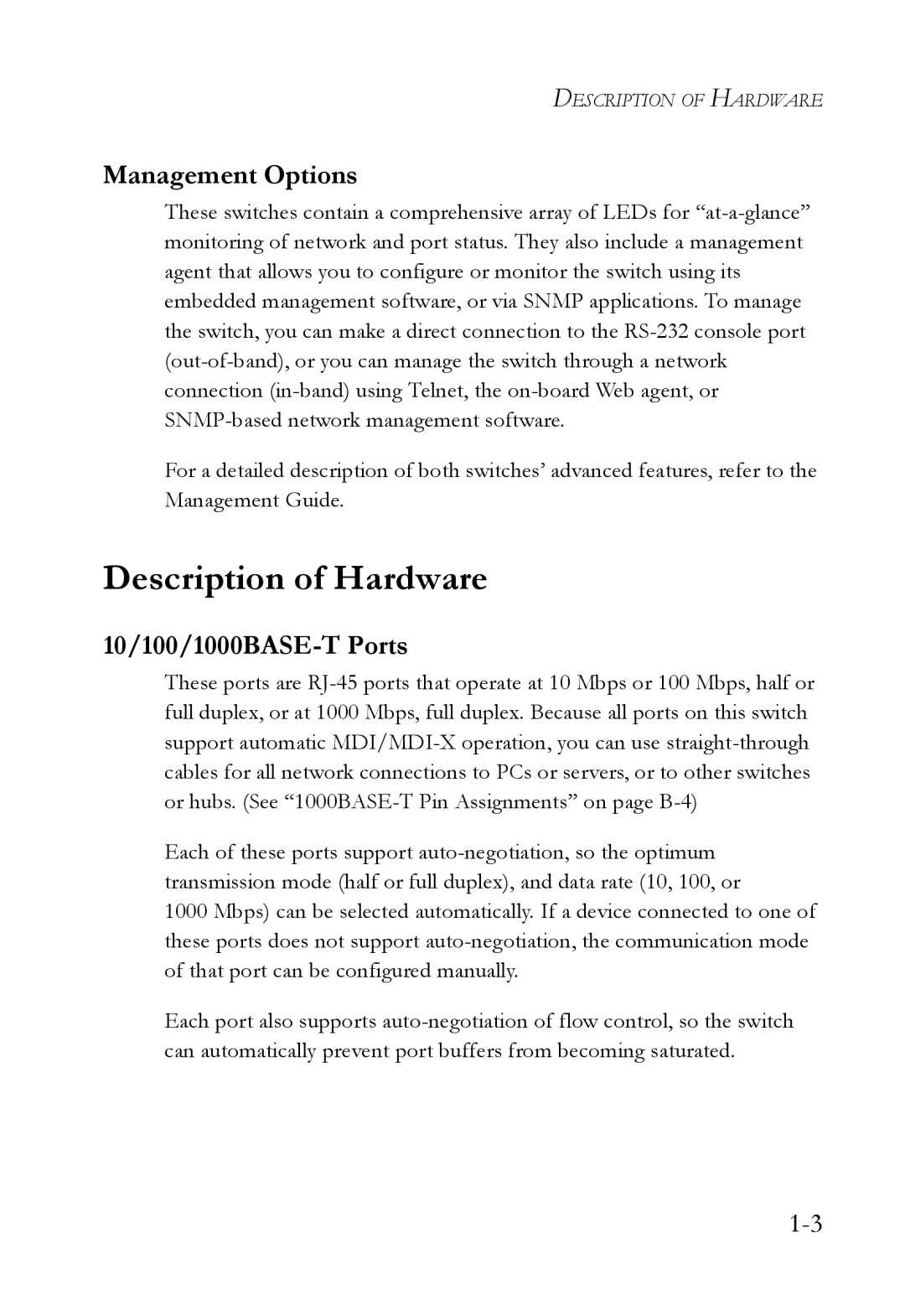DESCRIPTION OF HARDWARE
Management Options
These switches contain a comprehensive array of LEDs for “at-a-glance” monitoring of network and port status. They also include a management agent that allows you to configure or monitor the switch using its embedded management software, or via SNMP applications. To manage the switch, you can make a direct connection to the RS-232 console port (out-of-band), or you can manage the switch through a network connection (in-band) using Telnet, the on-board Web agent, or SNMP-based network management software.
For a detailed description of both switches’ advanced features, refer to the Management Guide.
Description of Hardware
10/100/1000BASE-T Ports
These ports are RJ-45 ports that operate at 10 Mbps or 100 Mbps, half or full duplex, or at 1000 Mbps, full duplex. Because all ports on this switch support automatic MDI/MDI-X operation, you can use straight-through cables for all network connections to PCs or servers, or to other switches or hubs. (See “1000BASE-T Pin Assignments” on page B-4)
Each of these ports support auto-negotiation, so the optimum transmission mode (half or full duplex), and data rate (10, 100, or
1000 Mbps) can be selected automatically. If a device connected to one of these ports does not support auto-negotiation, the communication mode of that port can be configured manually.
Each port also supports auto-negotiation of flow control, so the switch can automatically prevent port buffers from becoming saturated.
